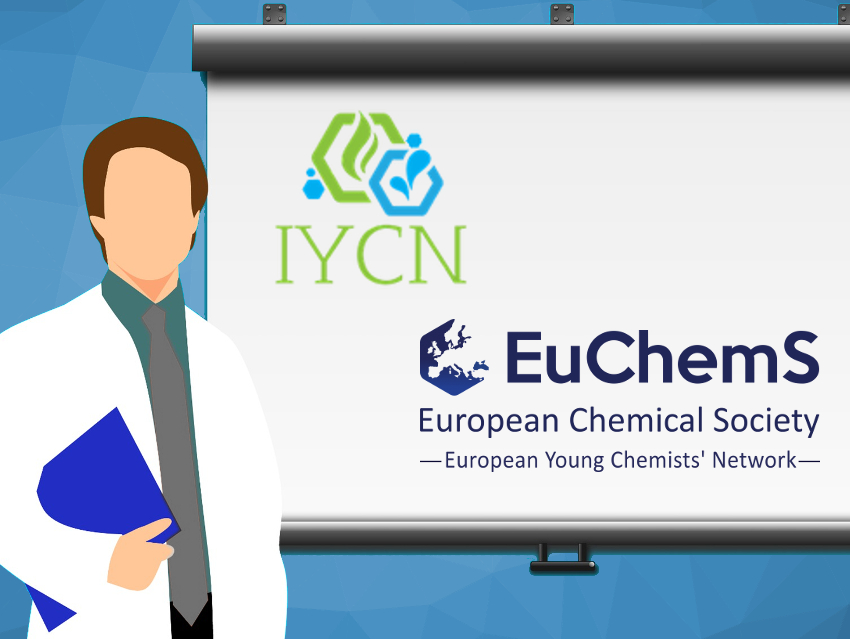Chemists in the early stages of their career have particular needs and goals in order to establish themselves in their professional environment. Motivated young chemists from all over the world seek diverse organizations devoted to supporting them during the first, challenging steps as young professionals. With this in mind, two organizations, the European Young Chemists’ Network (EYCN) and the International Younger Chemists Network (IYCN), were founded to support and mentor younger chemists, students, early career researchers, and professionals, at the European and international levels, while also being involved in outreach activities.
Organization of the EYCN and the IYCN
EYCN
The EYCN is the young division of the European Chemical Society (EuChemS) and its main goal is to connect, empower, and support young chemists under the age of 35 across Europe. The EYCN was founded in 2006 in Berlin, Germany, at first together with twelve national chemical societies [1].
In the following years, it has been strongly developed and the internal organization of the EYCN has significantly changed. Today, the EYCN consists of a Board with three Executive Board members and five complementary teams (Networks, Global Connections, Communication, Science, and Membership) with the corresponding Team Leaders (see Fig. 1). The Delegate Assembly (DA), which is a meeting of the national chemical societies’ representatives, takes place annually and is organized by a different chemical society each year, as voted on by the delegates during the preceding DA. Furthermore, the Board members and the Team Leaders are elected biennially.
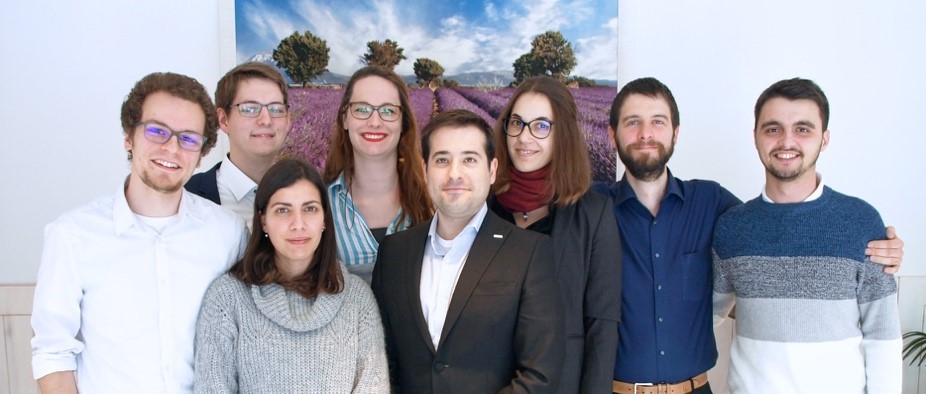
Figure 1. The EYCN board (2019–2021). From left to right: Miguel Steiner (Austria) – Membership Team Leader, Maximilian Menche (Germany) – Secretary, Carina Crucho (Portugal) – Treasurer, Lieke Van Gijzel (The Netherlands) – Global Connections Team Leader, Antonio M. Rodríguez Garcia (Spain) – Chair, Jovana V. Milić (Switzerland) – Networks Team Leader, Maxime Rossato (France) – Communication Team Leader, Robert-Andrei Țincu (Romania) – Science Team Leader.
IYCN
The IYCN is an associated organization of the International Union of Pure and Applied Chemistry (IUPAC) and welcomes members from the chemistry community from all around the world. Although other organizations, such as the EYCN, were already working on behalf of the young chemists’ community, the generation of a global and unified network to support young chemists beyond Europe was essential. Thus, the initial idea of the IYCN was conceived at the Fall 2015 National Meeting of the American Chemical Society (ACS) in Boston, MA, USA, and its official launch as an associated organization of IUPAC took place at the 46th IUPAC World Chemistry Congress (IUPAC2017) held in São Paulo, Brazil, in July 2017 [2].
The IYCN organization is similar to that of the EYCN: its legislative body is formed by delegates from the represented countries and its executive body by the Board members, including the Team Leaders of six steering committees (Governance, Public Outreach, Social Media, Finance, Conference Presence, and International Society Liaison) (see Fig. 2).
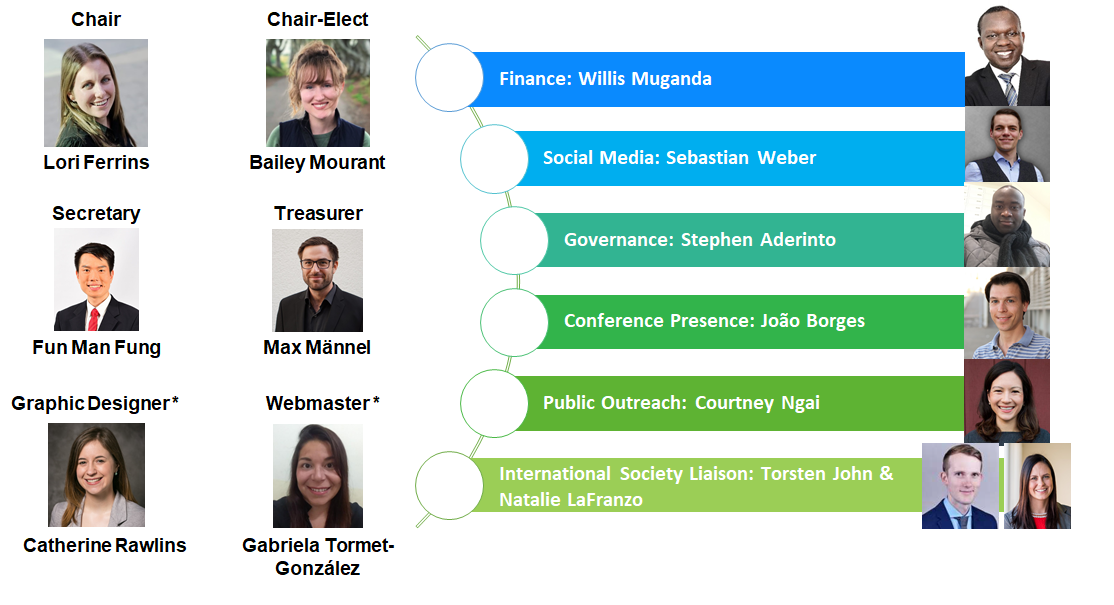
Figure 2. The IYCN board (2019–2021). Lori Ferrins (Australia) – Chair, Bailey Mourant (United States) – Chair-Elect, Fun Man Fung (Singapore) – Secretary, Max Männel (Germany) – Treasurer, Willis Muganda (Germany) – Finance Chair, Sebastian Weber (Germany) – Social Media Chair, Stephen Aderinto (Nigeria) – Governance Chair, João Borges (Portugal) – Conference Presence Chair, Courtney Ngai (United States) – Public Outreach Chair, Torsten John (Germany) – International Society Liaison, Natalie LaFranzo (United States) – International Society Liaison; Non-Voting Contributors: Catherine Rawlins (United States) – Graphic Designer, Gabriela Tormet-González (Venezuela) – Webmaster.
The first General Assembly (GA) took place last July, on the occasion of the 47th IUPAC World Chemistry Congress (IUPAC2019) held in Paris, France, where the IYCN bylaws and statutes were discussed and strategic plans of the organization for the upcoming years were established [3]. The second GA will take place at IUPAC 2021 in Montréal, Canada, in August 2021, followed by General Assemblies every two years on the occasion of the IUPAC World Chemistry Congresses.
Some Differences, One Common Goal
The main difference between the two networks is their geographic scope of action, since the EYCN currently represents 30 chemical societies from 28 European countries, including Russia and Turkey, while the IYCN has members from 40 countries across all continents (see Fig. 3). In addition, the activities, events, and award opportunities that both organizations engage in widely vary. This allows the establishment of different task forces in the two networks and an increase in the opportunities available for their members.
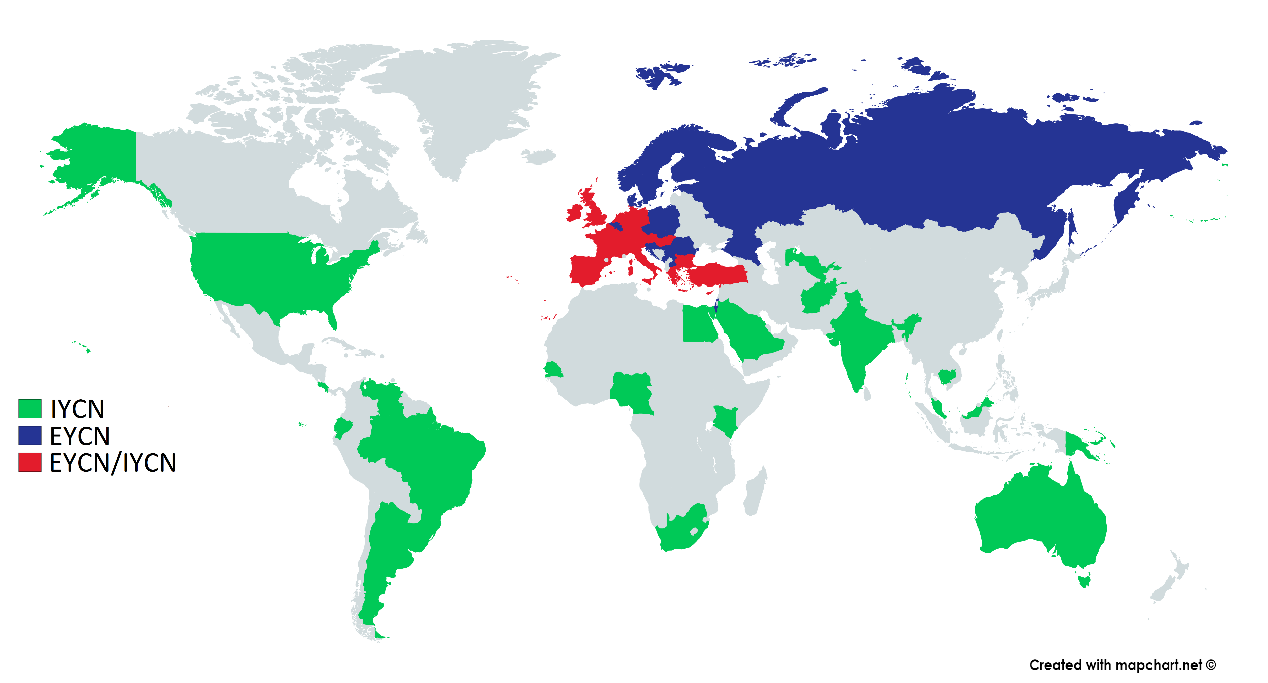
Figure 3. World map showing the countries with EYCN members (blue), IYCN members (green), and members of both networks (red); map created at mapchart.net by Dr. Gabriela Tormet-González.
Nevertheless, both the EYCN and the IYCN have a common goal, which is to support, connect, and empower young chemists around the world and engage in various scientific and educational activities. Examples are the participation in conferences (e.g., EuChemS Chemistry Congresses, European Young Chemists’ Meetings, IUPAC World Chemistry Congresses), exchange programs (e.g., Young Chemists Crossing Borders, YCCB [4]), as well as experiment and photography competitions, poster and/or oral presentation awards (e.g., European Young Chemist Award [5], Periodic Table of Younger Chemists). The organizations also aim to provide their members with useful tools (workshops, webinars, soft skills, libraries, mentoring possibilities, etc.) that address their professional needs, engage them in pressing societal challenges and, ultimately, boost their professional careers.
Competitions
International competitions have been a popular activity to engage the general public in science over the past few years. Based on the success and broad impact of such contests, the EYCN and IYCN have been launching different programs that aim to motivate young scientists to participate, share their views on current and future problems of our society and ideas on how to tackle them, and bring science closer to a broader audience.
For example, the EYCN has successfully organized the Photochimica contest, a European competition of scientific photography, since 2016 in collaboration with the Royal Society of Chemistry (RSC). The third edition was launched during the 15th Delegate Assembly of the EYCN, with sustainable development as the main topic—in celebration of the 50th anniversary of Earth Day. To highlight the focus of young scientists on pressing societal issues, the IYCN organized the first IYCN Outreach Competition: Engaging the Next Generation in 2019, sponsored by the Chemical Abstracts Service (CAS), where chemistry experiments related to climate change were submitted.
The topic of the 2020 IYCN Outreach Competition is “Earth Chemistry”, since sustainability is one of the hot issues that should be addressed on a global level, and the contribution of scientists is of key importance. This competition was recently launched, and the participants have the chance to submit their experiments until April 22nd, 2020. Such initiatives aim to stimulate a broad engagement of young scientists and increase the awareness of the general public of contemporary global challenges.
The experiments that are submitted to such competitions are described in a simple way so that anyone, even without specific knowledge or training, can get familiar with the pressing challenges of society worldwide. Moreover, such experiments can be, for example, repeated in school classes or public outreach activities, thus increasing the awareness of the general public.
Membership
Young chemists can become members of both networks if they meet the requirements. Specifically, every chemist under the age of 35 within the EuChemS framework becomes, automatically, a part of the EYCN. Moreover, each member country can nominate up to two official delegates that represent their chemical society in EYCN activities and annual meetings, including the DA. Young chemists who are interested in actively participating and contributing towards EYCN activities should first contact the corresponding national chemical society and then the EYCN’s Membership team ([email protected]).
Similarly, in order to become a member of the IYCN, a scientist should be younger than 35 years old and pursue a chemistry-related degree (e.g., Bachelor, Master, Ph.D.) or work in a chemistry-related field. Alternatively, a new member should have completed a chemistry-related degree or training (e.g., post-doc) during the past five years. Being an active member of the IYCN does not require being an official delegate of the corresponding national chemical society. A membership form is available online. Each member-country of the IYCN can have up to two delegates and one vote in the elections at the GA. IYCN members are welcome to participate actively in different steering committees by undertaking individual projects, such as the financial management or the network’s outreach through the social media accounts, thus supporting the aims, vision, mission, and progress of the IYCN.
The active members/delegates from all the member societies have the opportunity to represent the EYCN and/or the IYCN at conferences in their country or abroad, by introducing the vision, mission, and activities of both networks through oral or poster presentations, while inviting new members. Furthermore, they are involved in the different projects of each team or steering committee, while they are also invited to participate and actively contribute in the activities of the DA and the GA, respectively.
The active participation of members in a wide variety of tasks, from the organization of activities to the writing of articles, allows for a substantial development of their skills as communicators, writers, collaborators, and leaders. Both organizations offer a number of opportunities to the delegates to expand their network and are always open to welcome new motivated young chemists as members. This contributes to their vision of a more connected world of young scientists, while offering opportunities for networking and development for young professionals globally.
A Collaborative Journey
The EYCN and IYCN have so far been working independently, organizing activities dedicated to the young chemists of their representative countries. However, there are members in both organizations who have been working together in the EYCN or in their national chemical societies. In this respect, both networks already have strong connections on a personal level. The GA at IUPAC2019 was a unique opportunity to establish a closer IYCN–EYCN relationship and to support EYCN in its vision to extend its activities outside Europe, aiming at fostering global collaborations. This was particularly highlighted on the occasion of the election of the new EYCN Board in March 2019 [6], where the intercontinental efforts of the Networks Team stimulated the implementation of the Global Connections Team. The aim is to create contacts with non-European organizations and to support younger chemists in their integration in Europe and beyond. The EYCN delegates were also present during this first IYCN GA, allowing the two networks to set common goals and launch partnerships for future joint events and collaborations (see Fig. 4).
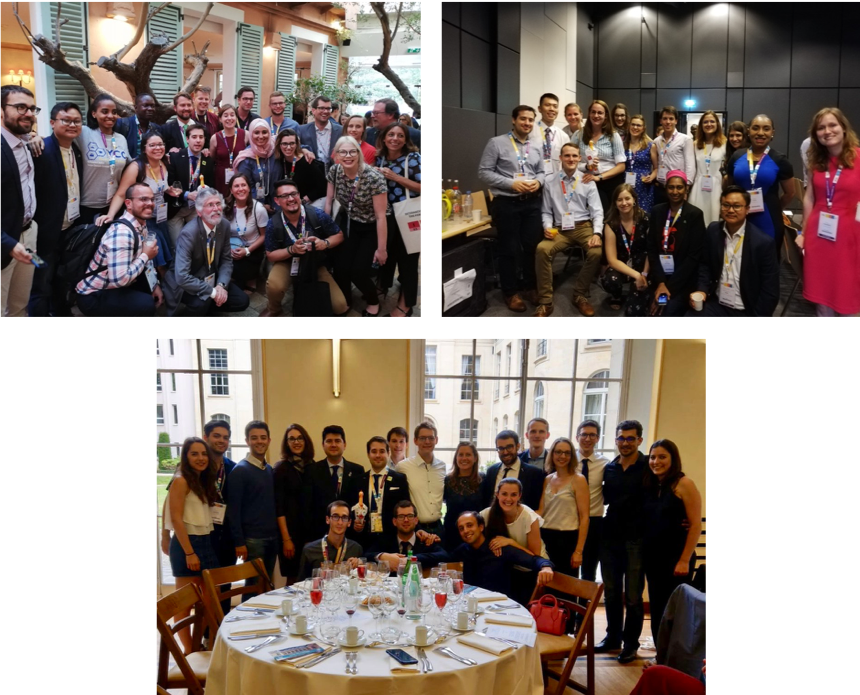
Figure 4. EYCN and IYCN members had the opportunity to exchange ideas and set new goals during the IYCN GA and the IUPAC congress, as illustrated in some of the selected photos, featuring Prof. Luis A. Echegoyen, President of the American Chemical Society, and Prof. Javier García-Martinez, President-Elect of IUPAC. Photo credit: Ms. Fatima Mustafa (IYCN Delegate from Jordan), EYCN Social Media (@YoungChemists).
The contribution of the EYCN representatives in defining and working towards the implementation of a common vision will be of great importance in the near future. Simultaneously, the global outreach of the EYCN will be strengthened by the support of the IYCN through its representation in conferences and its contributions to science policy efforts. Both the EYCN and the IYCN are engaging young chemists from the remaining countries to enhance their impact.
Useful links
- IYCN: Website, Facebook, Twitter, LinkedIn
- EYCN: Website, Facebook, Instagram, Twitter, LinkedIn, YouTube
References
[1] EYCN Team, Introducing the European Young Chemist Network (EYCN), ChemistryViews.org 2012. https://doi.org/10.1002/chemv.201200122
[2] IYCN and IUPAC Work Together, Chem. Int. 2017, 39, 42–43. https://doi.org/10.1515/ci-2017-0421
[3] B. Mourant, L. Ferrins, S. Carenco, N. LaFranzo, C. M. Rawlins, The Inaugural IYCN General Assembly, Chem. Int. 2020, 42, 16–19. https://doi.org/10.1515/ci-2020-0105
[4] U. I. Zakai, N. LaFranzo, C. Dunne, J. Breffke, Young Chemists Fearlessly Crossing Borders, ChemistryViews.org 2015. https://doi.org/10.1002/chemv.201500051
[5] B. Pignataro, The European Young Chemist Award 2018, Chem. Eur. J. 2018, 24, 17164–17169. https://doi.org/10.1002/chem.201804984
[6] M. Rossato, D. Pournara, J. V. Milić, C. Bakewell, M. Menche, A. M. Rodriguez Garcia, 14th Delegate Assembly of the European Young Chemists’ Network (EYCN), ChemViews Mag. 2019. https://doi.org/10.1002/chemv.201900048
